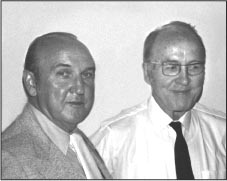
In 1933 Drs. Wilfred and Evan Shute were some of the first doctors to use large doses of vitamin E to treat heart disease. At that time, antioxidants and free radicals were rather obscure concepts in the chemistry of oxidation, far removed from issues of health and disease. Also at that time, using vitamins to treat serious diseases such as heart disease and diabetes was considered by the medical establishment as misguided at best and outright fraud at worst. Yet thanks to the observant practitioners such as the Shutes who were more interested in what helped their patients most, medical researchers became motivated to study it scientifically. The results would speak for themselves. For decades, vitamin E was lampooned as a "cure in search of a disease." In 1985, Linus Pauling wrote: "The failure of the medical establishment during the last forty years to recognize the value of vitamin E in controlling heart disease is responsible for a tremendous amount of unnecessary suffering and for many early deaths. The interesting story of the efforts to suppress the Shute discoveries about vitamin E illustrates the shocking bias of organized medicine against nutritional measures for achieving improved health." Dr. Pauling would most likely have appreciated this comment from a recent Harvard Health Letter: "A consistent body of research indicates that vitamin E may protect people against heart disease...The data generally indicate that taking doses ranging from 100 to 800IU per day may lower the risk of heart disease by 30%-40%." Over half a century ago, the Shute brothers and colleagues showed that, with even higher doses than those, and with an insistence on the use of natural vitamin E, the results are better still. Today's growing appreciation of the role of d-alpha tocopherol in preventing and reversing cardiovascular disease is due primarily to the Shute brothers.
"We didn't make vitamin E so versatile. God did. Ignore its mercy at your peril."
|